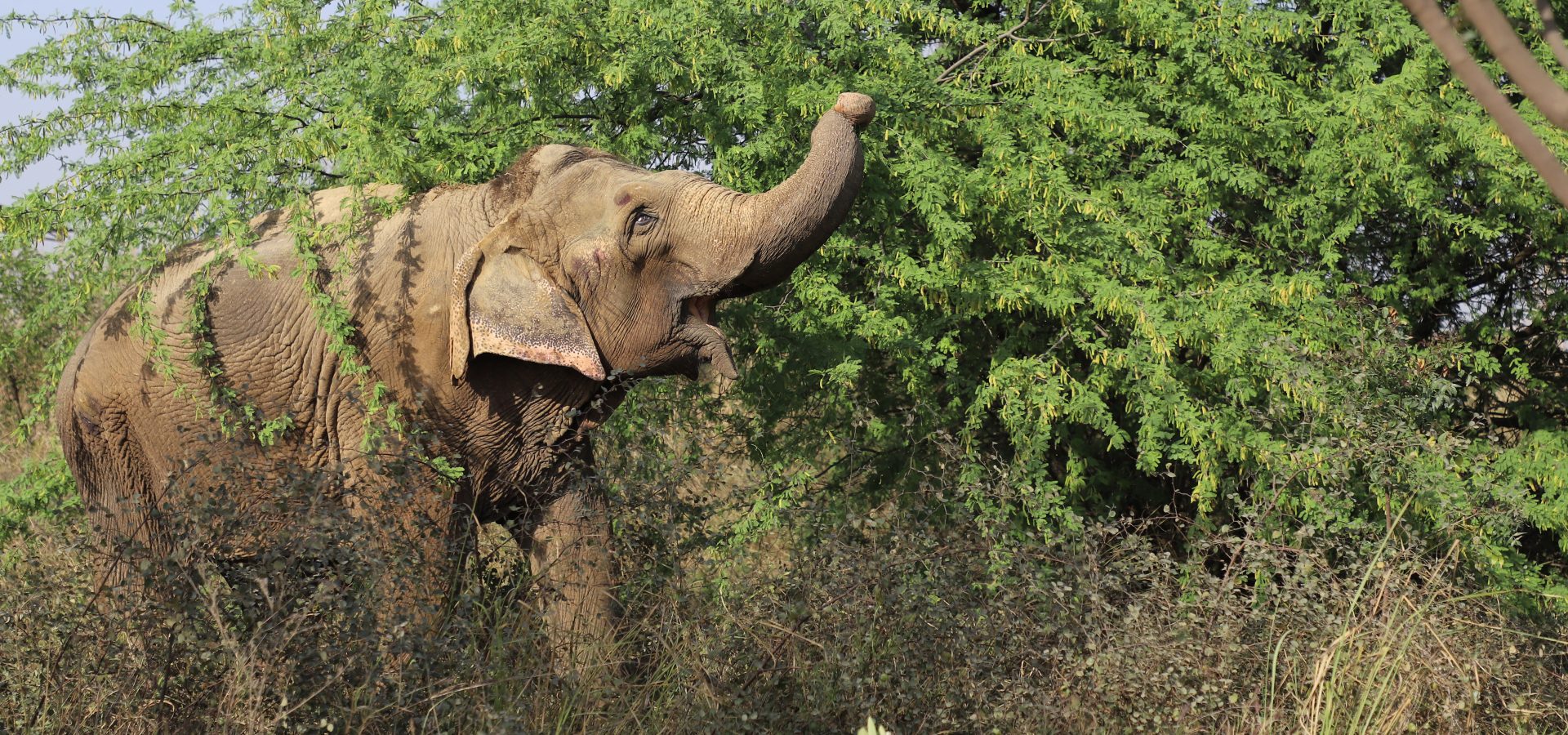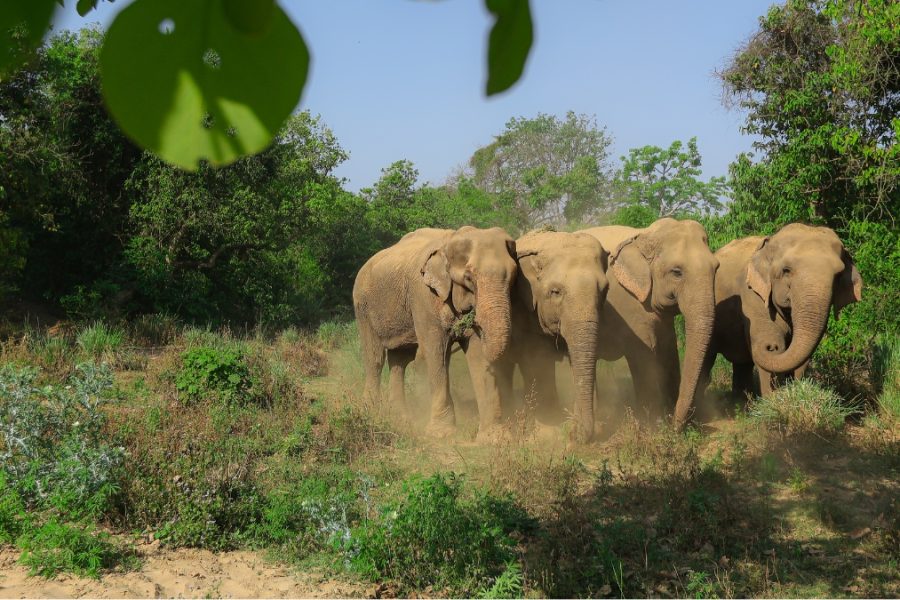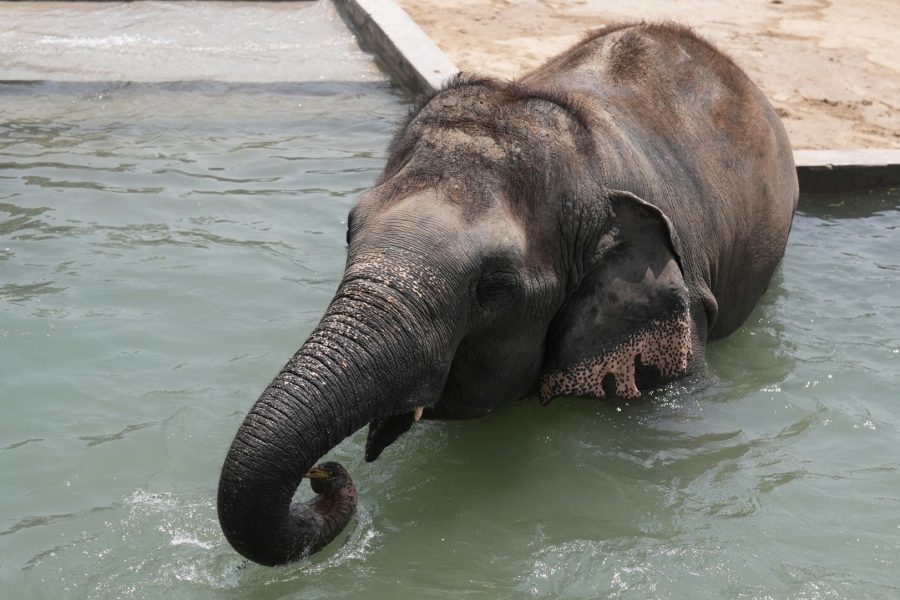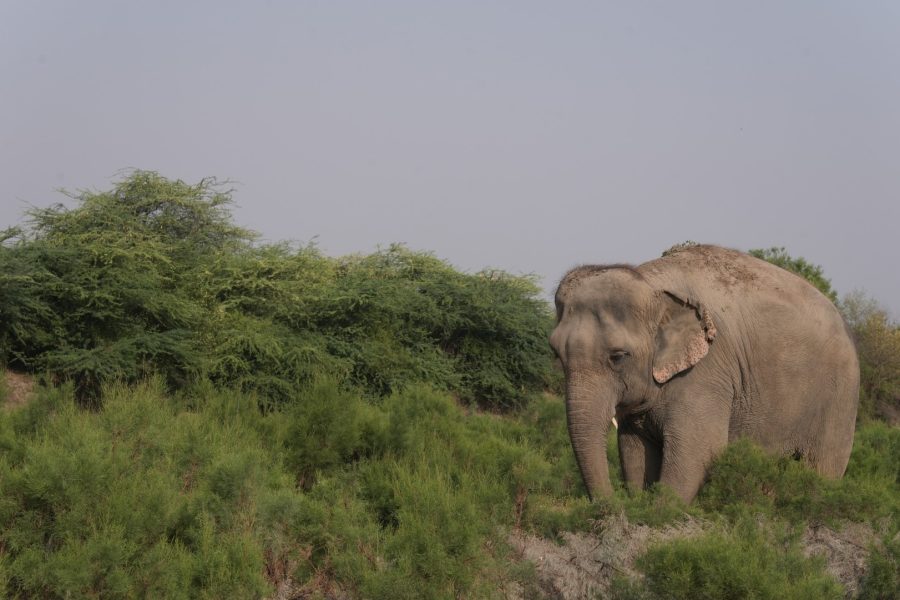It is a well-known fact that elephants are the largest terrestrial animals. This also means that these giants require an enormous space as their habitat. A size ranging from 550 to 700 square kilometres has been estimated as a typical home range for female Asian Elephants in India. To seek food and water resources, elephants are known to move from one place to another, and this phenomenon is known as migration. They travel across vast terrains and a myriad of habitats, and so, protecting elephants would in turn also sustain the diverse species of flora and fauna that reside within their habitat. Their immense impact on the ecosystem is what makes elephants an umbrella species.
As a matter of fact, these pachyderms devote about three-fourths of their lives to travelling in search of food and water. Changes are, however, being noted in their migration routes and patterns, triggering discussions around the reasons that may be causing them. For instance, In 2021, a herd of wild Asian Elephants in China migrated over 500 kilometres northwards from their original habitat, making this an unusual long-distance migration. In India, a population count of elephants carried out in 2020 by the Uttarakhand Forest Department made a strange finding. Elephants were found to be further up in the hills; they had migrated from the lower ranges to the middle ranges of the Himalayas.
Another interesting observation made was of an elephant herd named ‘Monica’ in south India. This herd is known to begin its migration from Kerala to Tamil Nadu in the month of August every year. However, Monica herd arrived at its destination a month earlier in 2022, raising an alarm among local inhabitants.
Elephant migration is an adaptive response to the season, and the availability of food and habitat. These pachyderms rely on environmental cues, like rainfall or drought, to embark on their migratory journey towards a more suitable climate. Additionally, migration also varies with elephant herd size — larger herds tend to migrate longer than smaller groups.
The longest recorded Asian elephant migration in China mentioned above owed itself to the fact that the native area had experienced a prolonged period of drought and eventual loss of adequate food. Other potential factors considered were an increase in the elephant population, climate change, and habitat degradation.
In the Nilgiri Hills of India, elephants move all year round motivated largely by dietary needs and climate. They traverse from wet evergreen forests to deciduous ones in order to escape insect swarms during the monsoon season. A study has successfully identified 18 inter-state migratory routes that elephants use for migration between Tamil Nadu and Kerala. This migration, too, is dependent on factors like the availability of water resources and forest patches.
Human intervention can also play a major role in rerouting elephants’ routes. It has been reported recently from Madhya Pradesh that from having just seven in 2007, the number of elephants there has now increased to 60, with short-term interstate migrations pushing the total up to 100. It has been speculated that habitat fragmentation, illegal felling of trees and infrastructure projects in the neighbouring states pushed the elephants away from their erstwhile habitats. Researchers have also observed that in 2002, elephants began to extend their migration range from Karnataka to its adjoining state Maharashtra. A possible cause for this has been attributed to the reduction of forest land due to rampant construction activities.
Potential Human-Elephant Conflict
With wild habitats becoming severely fragmented due to the rampant construction of roads, highways, railways, transmission lines, canals, dams, mining sites and other human-dominated landscapes, the space for native wildlife to thrive lessens dangerously. As elephant populations move from one place to the other, it increases the chances of conflict between humans and elephants. During migration, elephants tend to wander into crop fields, villages, and towns — scouting for food and water. Interaction with humans indefinitely leads to tragic consequences for both species alike.
In 2010, India recognised the Asian Elephant as a National Heritage Animal. Despite the rise in awareness campaigns, human-elephant conflict (HEC) highly threatens their population across the country. Of all, crop-raiding has been identified as the major reason behind HEC. By invading crop fields, elephants can collectively cause a tremendous loss of up to a million dollars.
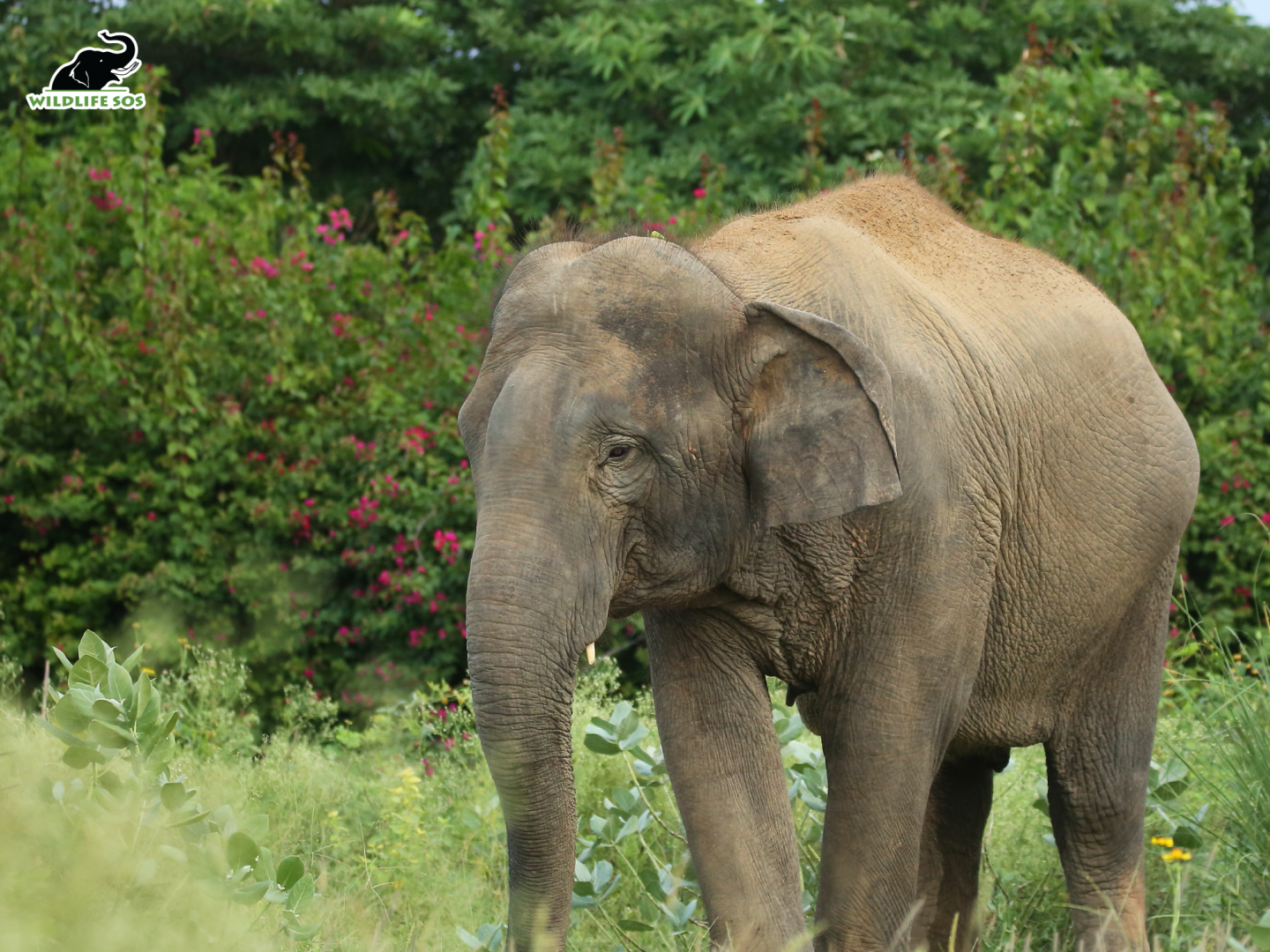
One of the ways to reduce conflict is to ensure the sustenance of wildlife corridors. Wildlife corridors are lands that act as passages to connect wildlife habitats with each other. In Uttarakhand, the Chilla-Motichur corridor is used recurrently by bull elephants for movement between Rajaji and Corbett National Parks. It allows a healthy genetic flow between the elephants across the two habitats. Similarly, Siju-Rewak corridor in Meghalaya also enables migration between two separate elephant populations. A total of 88 elephant corridors have been identified across India.
Wildlife SOS’ Elephant Project in Chhattisgarh
In the early 1900s, a steep decline in the number of Asian elephants was observed in the central parts of India, possibly due to anthropogenic activities. A few decades later, elephants who would erstwhile journey through Jharkhand and Odisha began to establish a new range in the Chhattisgarh region. Their migration through dense forests often resulted in encounters with humans. This impacted both species adversely. Determined to understand the underlying causes of HEC and implement appropriate mitigation strategies, Wildlife SOS initiated the Chhattisgarh Elephant Project in 2018.
As a part of the project, our team aimed to radio-collar the matriarch elephant of one herd, conduct awareness and training of villagers, and study the pattern of their range, seasonal ranges, and behavioural patterns of elephants. In order to come up with a tangible solution for the conflict, the team installed an Early Warning System that works as a systematic way to track the elephant herd. The system allows the local population as well as the forest department to know in advance about the elephant herd movement and prevent any conflict.
To know more about our efforts to mitigate human-elephant conflict in Chhattisgarh, click here.
You can support our research projects by making a donation.

